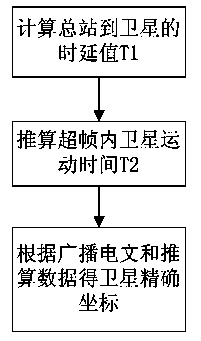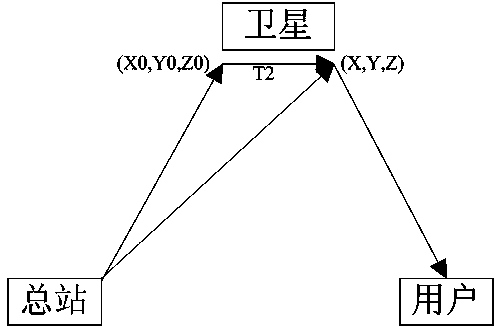Satellite positioning method, module and terminal based on RNSS
A satellite positioning and satellite technology, applied in the RNSS-based satellite positioning method, processing module and terminal field, can solve the problems affecting the accuracy and deviation of the user machine, and achieve the effect of improving the positioning and timing accuracy
- Summary
- Abstract
- Description
- Claims
- Application Information
AI Technical Summary
Problems solved by technology
Method used
Image
Examples
Embodiment Construction
[0014] In order to make the object, technical solution and advantages of the present invention clearer, the present invention will be further described in detail below in conjunction with the accompanying drawings. It should be understood that the specific embodiments described here are only used to explain the present invention, and are not intended to limit the present invention.
[0015] figure 1 It is a flow chart of an RNSS-based satellite positioning method of the present invention.
[0016] Such as figure 1 As shown, the present invention is realized by the following technical solutions: a method for accurately calculating the position of the Beidou No. 1 satellite, which includes three steps: S101, obtaining the time delay value that the nth subframe in a superframe is sent from the general station to the satellite T1; S102, according to the delay value T1, deduce the satellite movement time T2 during the nth subframe in a superframe from the general station to the ...
PUM
 Login to View More
Login to View More Abstract
Description
Claims
Application Information
 Login to View More
Login to View More - R&D
- Intellectual Property
- Life Sciences
- Materials
- Tech Scout
- Unparalleled Data Quality
- Higher Quality Content
- 60% Fewer Hallucinations
Browse by: Latest US Patents, China's latest patents, Technical Efficacy Thesaurus, Application Domain, Technology Topic, Popular Technical Reports.
© 2025 PatSnap. All rights reserved.Legal|Privacy policy|Modern Slavery Act Transparency Statement|Sitemap|About US| Contact US: help@patsnap.com


